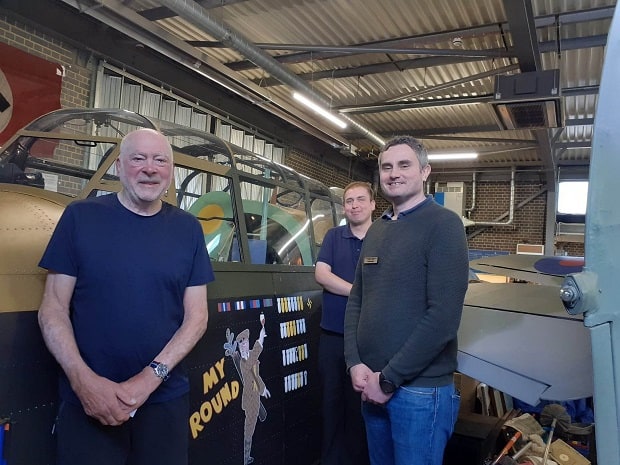
A Lancaster bomber cockpit section at the Spitfire and Hurricane Memorial Museum in Manston will be ‘the most immersive in the world’ when work to create a simulator experience is complete.
The Lancaster was a British four-engined strategic craft that was used as the RAF’s principal heavy bomber during the latter half of the Second World War.
It held seven Bomber Command crew and was the main aircraft for the night-time bombing campaigns during the conflict.
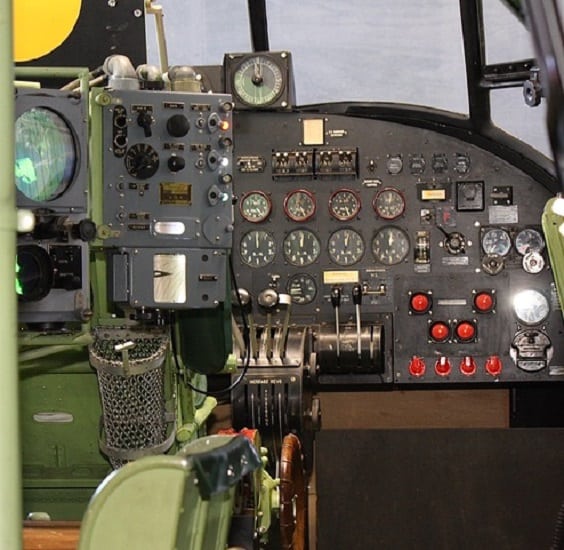
The crew would consist of a pilot, flight engineer, navigator, bomb aimer, wireless operator/air gunner, mid-upper gunner and a rear gunner.
The interactive Lancaster cockpit section and tours at the museum will give visitors an insight into the life of World War Two bomber crews,
The museum’s Lancaster experience is in memory of former trustee and volunteer Gerry Abrahams who passed away in January aged 99.
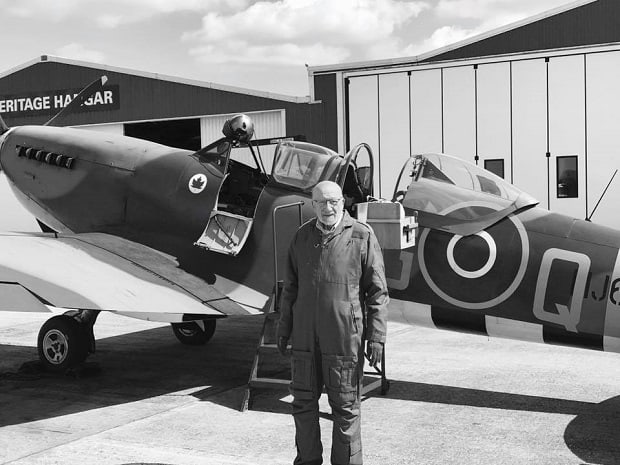
The RAF Bomber Command veteran served in 31 operations with 75 (New Zealand) Sqn over Nazi Germany, including a bombing mission where one of his aircraft engines got shot away by the Luftwaffe. He later became a Bomber Command Instructor. He also flew during the Berlin Air Lift in the Cold War.
Some £100,000 was raised for the project and the section arrived at the museum in February. It features all the instruments and a H2S radar and co-owner and trustee Christian Miller, of tech firm Simmiltech Ltd, is working on the simulator technology which will be similar to the existing Spitfire simulator but ‘even more immersive.’
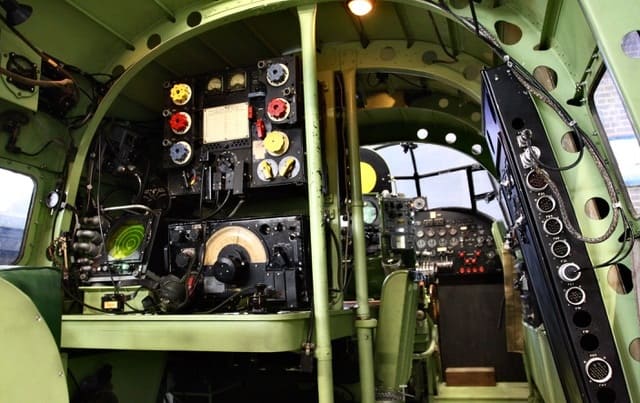
Christian said: “It will be one of the only ones in the world with a working radar. Visitors will be able to see and get a description of the crew, so sit in the radio operators chair and the navigator’s chair and see what he did and the equipment he used.
H2S radar back in place and running on my new software, kindly a 100 year old Lancaster navigator veteran will be helping me dial it in next month. #ww2 #lancasterbomber pic.twitter.com/5GPCVts0h8
— Chris Miller (@cpsbattlefield) May 2, 2023
“They can go in the flight engineer position and see how he would deal with the fuel systems and make sure everything was running ok and then get in the pilot’s seat. They will be able to start all four engines and rev it up, get the story of the air crew and what they went through, the history of the raids.
“It will eventually be turned into a flight simulator like the Spitfire one but will be even more immersive.”
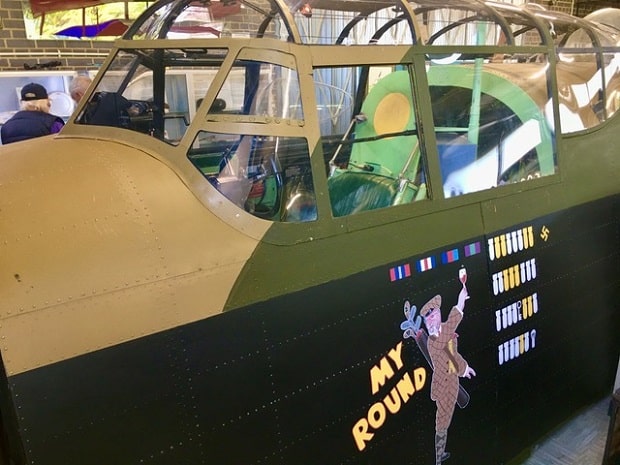
It is hoped to have a preview opening of the cockpit section, which also features ‘nose art’ by David Bryant, next week (May 16-17) to coincide with the anniversary of the Dambusters raid.
Dambusters Raid
On the night of 16-17 May 1943, Wing Commander Guy Gibson led 617 Squadron of the Royal Air Force on an audacious bombing raid to destroy three dams in the Ruhr valley, the industrial heartland of Germany. The mission was codenamed Operation ‘Chastise’.
The dams were fiercely protected. Torpedo nets in the water stopped underwater attacks and anti-aircraft guns defended them against enemy bombers.
But 617 Squadron had a secret weapon: the ‘bouncing bomb’.
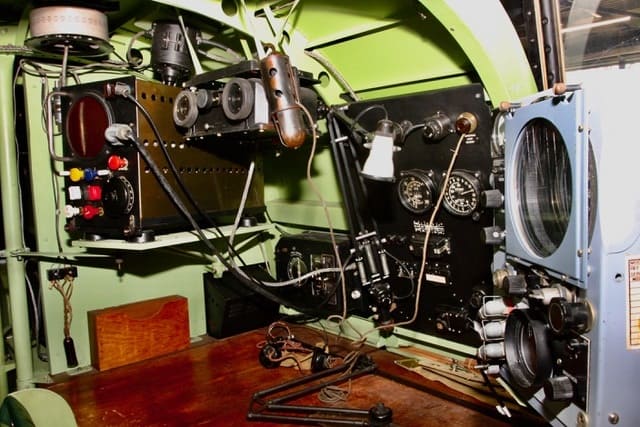
In 1942 British engineer Barnes Wallis began working on plans for a bomb that could skip across water. He developed the idea by experimenting with bouncing marbles across a water tub in his back garden. Wallis thought the new weapon could be used to attack moored battleships, but research soon focused on using it against the dams that were vital to German industry.
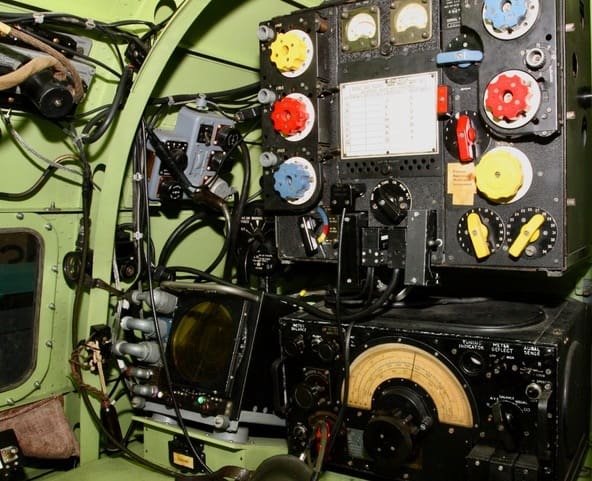
From 9.28pm on 16 May,1943, 133 aircrew in 19 Lancasters took off in three waves to bomb the dams. Five aircraft had to drop their bombs before it was breached. The remaining aircraft still to drop their bombs then attacked the Eder, which finally collapsed at 1.52am.
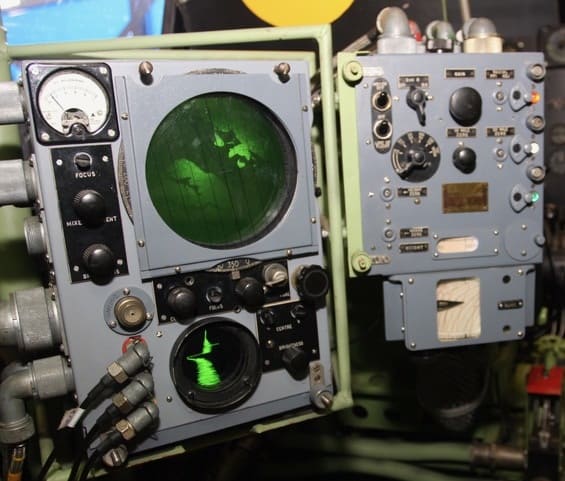
Of the 133 aircrew that took part, 53 men were killed and three became prisoners of war. On the ground, almost 1,300 people were killed in the resulting flooding.
The surviving aircrew of 617 Squadron were lauded as heroes, and Guy Gibson was awarded the Victoria Cross for his actions during the raid. The raid also established 617 Squadron as a specialist precision bombing unit, experimenting with new bomb sights, target marking techniques and colossal new ‘earthquake’ bombs developed by Barnes Wallis.
New visitors
It is hoped the Lancaster cockpit will bring new visitors to the museum, including families of those who flew in the bombing campaigns.
Manager Robert Westbrook said: “It enables us to tell another part of the story, you can’t put the fight in context without telling the story of Bomber Command.”
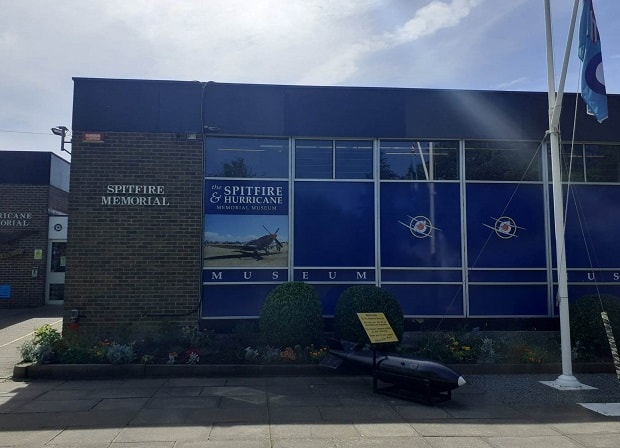
The Spitfire & Hurricane Memorial Museum on Manston Road, Ramsgate, is open 10am-5pm Tuesday to Sunday (and Bank Holiday Mondays). Admission is free.
The Lancaster preview is scheduled for May 16-17 with hopes the simulator will be completed later in the summer.
Find out more about the museum here
Dambuster Raid details with thanks to Imperial War Museums

